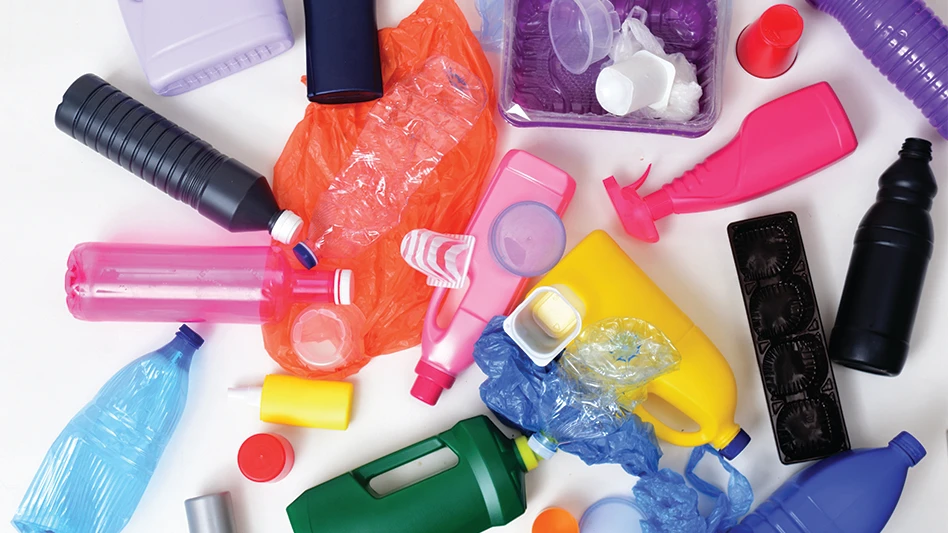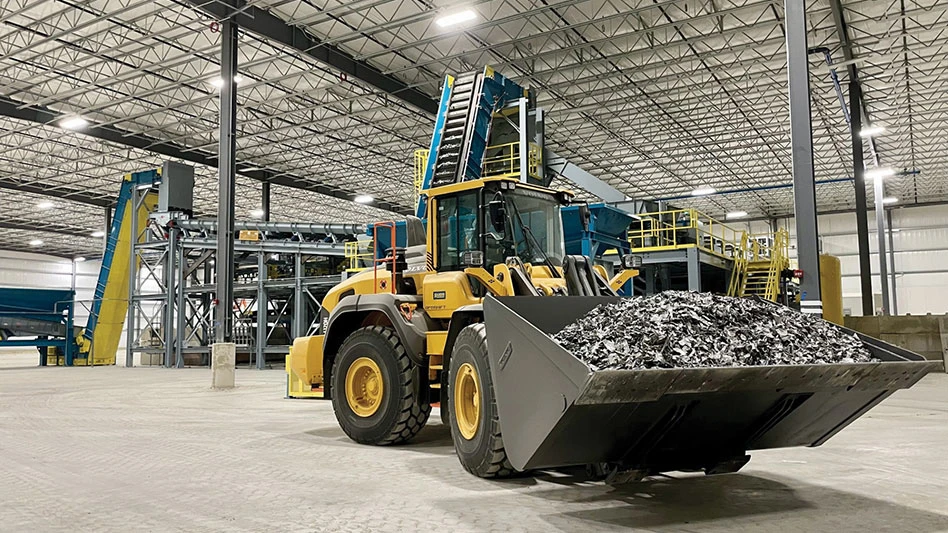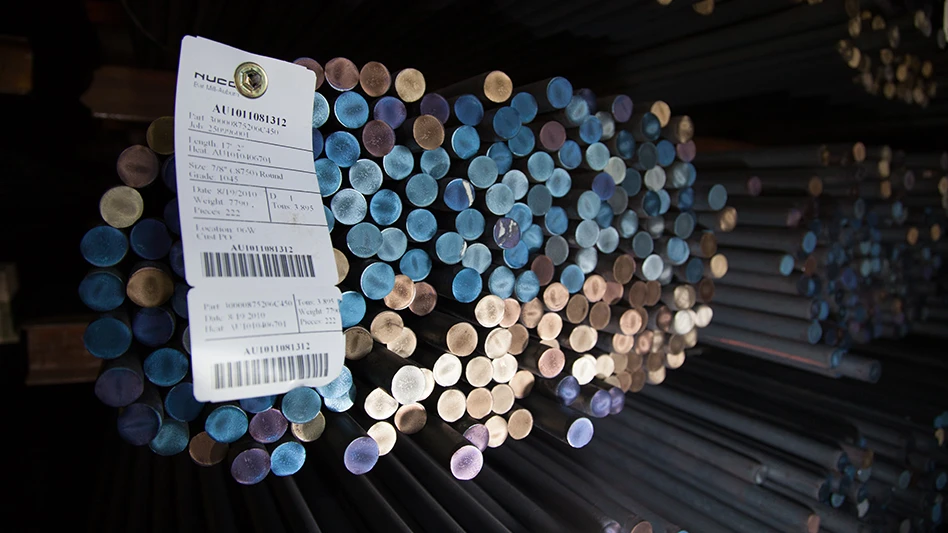Big cities such as New York, Chicago and L.A. pose big challenges for municipal recycling. Wide geographic areas; large, ethnically and economically diverse populations; many multi-family dwellings; and the potential pitfalls of large bureaucracies are some of the variables to consider. These three cities are taking different approaches, but share a few similarities. All three place a strong emphasis on the importance of public education, and all three have tried to find ways to recycle more with fewer dollars.
New York’s program has been around the longest and serves the most people, L.A. is noted for its strong public outreach and relatively high diversion rate and Chicago’s citywide residential program, just about to begin, is probably the largest system of commingled co-collection yet implemented.
NEW YORK HOLDS STEADY
One of the first to feel a landfill crisis, New York – with a population of 7 million – was fairly early in implementing a recycling program, and now boasts a mandatory program that serves all 3.5 million city households, including both single-family and multi-family.
Using either a blue bag or a bin with the city’s recycling sticker attached, residents can recycle paper (ONP, OMG and OCC, catalogues and phone books) and commingled containers on a weekly basis. Eventually, all city residents will be able to collect mixed paper and small bulk metal items.
“Our entire MRF operation is privatized right now, and we pay or get paid based on a tip fee,” explains Robert Lange, director of the New York Department of Sanitation’s recycling operations. “The city gets paid quite well for its paper, and we pay for metal, glass and plastic to be processed. But the kind of product we collect is radically different in terms of quality and quantity from what other municipalities collect.”
This is due to several factors. For one, the state of New York has container deposit legislation that prevents a lot of aluminum from entering the residential stream. Also, the city faces scavenging of recyclables on a large scale.
“We also don’t reject loads at the curb like many municipalities do, because in New York it would quickly become a litter problem,” says Lange. “We pick up what’s there and take it to the MRF, even if the homeowner or building doesn’t quite understand what we are asking for. So, the residue rate fluctuates. It depends on the efficiency of the MRF and it depends on what districts in the city the MRF is getting material from. But it ranges from 15 percent to as high as 25 percent.”
Based on the current fill rate and its capacity, Fresh Kills Landfill, where most of the city’s waste ends up, is projected to last another 15 years, says Lange. The city is actively investigating its future disposal options, such as incineration.
“Most residents are not in favor of incineration,” he says. “The city has one incinerator still in the planning stage, that is slated to go on line in 1999 at the Brooklyn Navy Yard. Other than that, recycling and exporting are the other major options.”
And it’s recycling that has been a bright spot despite severe budget cuts last fiscal year.
“Fortunately, halfway through the fiscal year the markets started to turn around in paper, plastics and other items,” explains Lange. “We went from paying out $16 million a year in processing to paying out $8 million and taking in $20 million. Therefore, the budget cuts did not affect our service, because that new revenue stream managed to offset the cuts.”
In the area of disseminating information, Lange says that the city has done extensive public education programs. When the recycling program was fully implemented in 1993, New York spent about $8.5 million on an advertising and educational campaign.
“We did a mailing to every business and household,” says Lange. “We did seminars in all the burroughs, and started a 24-hour telephone hotline in several languages. For the hearing impaired, we put information in the Yellow Pages about how and what to recycle in each burrough, and advertised the collection days. We also published and distributed 11 million pieces of literature.”
According to Lange, New York’s biggest recycling challenge is servicing high-density areas, as the city has a very ethnically and economically diverse population. Also, the city has a high transient pedestrian population, so anything set on the curb has the potential to become a litter problem. This makes early-morning collection imperative.
Another challenge is meeting city recycling mandates and state recycling goals. “The city mandates don’t really reflect reality; they are very high,” says Lange. “This year the goal is a 25 percent diversion rate, but we are really at more like 13 percent to 14 percent.”
A 25 percent recycling rate is probably eventually achievable in New York, says Lange, but beyond that, a higher rate may be too expensive and difficult to achieve.
LOS ANGELES EDUCATES
Although the city only services about a third of its households with curbside recycling, and there is no mandatory city recycling law, Los Angeles has an aggressive program of public education and technical assistance, according to Lupe Vela, program manager for the Los Angeles Integrated Solid Waste Management Office.
Recycling in L.A., population 3.8 million, is handled both by the city and the private sector. The city services about 600,000 single-family households, and the multi-family units, governmental institutions and commercial establishments are handled by about 150 haulers in the private sector.
L.A. does have to comply with state recycling goals, says Vela, of 25 percent recycling by the end of this year, 50 percent by the year 2000, and 70 percent by the year 2020. But the city is already ahead of that timetable.
“As we are finishing all our documentation for 1994, we’re looking at a 30 percent recycling rate for all sectors, including commercial and industrial,” says Vela. “We also worked on an earthquake debris recycling project and recycled more than 1.6 million tons – almost an 80 percent recycling rate.”
The city collects commingled bottles, cans and glass at the curb, and recently has added residential mixed paper. That includes phone books, cereal boxes and junk mail, along with the cardboard and newspaper the city already collected. Materials are collected in color-coded containers provided by the city, including a yellow bin for recyclables, a black refuse container for refuse and a green container for green waste (yard trimmings, fruit and vegetables). Materials are processed in private MRFs, and the rest goes to the city-owned Lopez Canyon Landfill.
Vela cites many of the same challenges that other big cities face in implementing recycling – the variety of cultures, ethnic groups and languages; the geographic distances; and difficult decisions about where to site facilities.
Although the city does not service multi-family units and the commercial and industrial sector with actual recycling pickups, the Integrated Solid Waste Management Office does provide extensive education and technical assistance, says Vela. In fact, the ISWMO received the Outstanding Government Leadership Award from the National Recycling Coalition in September for its efforts.
“We use the generator approach,” she says. “What we’ve done is develop about 20 working groups with industry and commercial businesses, and we met with each individual sector and said ‘we don’t want to have a mandatory program, but we would like you to do something in recycling,’ and they have.”
The ISWMO has implemented a number of diverse programs. For example, the office formed the Material Exchange Program to donate items such as paint, computers and furniture to nonprofit groups.
“We have the biggest donation program in the country,” says Vela. “We also just finished developing a resource recycling guide for artists. We’ve done audits on the harbor department, guides on how to recycle at airports and at hotels, a dry-cleaning workshop, and a construction and demolition recycling guide.
“As long as you provide the technical assistance,” continues Vela, “people have a tendency to know what to do without having it mandated.”
The city is about to start a multi-family pilot program to encourage more multi-family units to join the curbside recycling program. The ISWMO will work closely with schools, community centers and neighborhood watch groups to facilitate recycling despite five distinct languages, a wide range of personal incomes and a variety of apartment designs.
Los Angeles city programs are also facing budget cuts, with the biggest potential problem being the closure of the city’s landfill. L.A. has traditionally provided refuse collection and recycling service for free. However, when the city’s landfill closes, residents will face new fees, so Vela says that the city is starting to look more heavily at diversion, not just disposal.
CHICAGO’S PLAN
Chicago has put together an ambitious, somewhat experimental recycling program slated to begin in December. Called commingled co-collection, the program will allow residents to collect recyclables in two blue bags – one for paper (old newspapers, junk mail, and old corrugated containers), and the other for metals, glass and plastic. These will be placed, along with regular garbage, in a 90-gallon supercart. Both recyclables and garbage will be collected in the same truck, and then sorted at four MPFs that will have separate sorting lines for garbage and recyclables.
Although commingled co-collection has been tried by other cities, it has not been done on such a large scale.
Chicago has a population of almost 3 million people from whom the city’s Streets and Sanitation Department picks up 1.1 million tons of waste yearly – about 38 percent of the city’s waste stream. The rest is serviced by 45 to 50 private haulers and recycling firms.
“The city picks up materials from 740,000 single-family and up to four-unit households; multi-family dwellings above four units and commercial establishments are serviced by private haulers,” says Ken Davis, spokesperson for the Chicago Department of Environment.
Although the city does not mandate residential recycling, a law took effect Jan. 1, 1995 requiring every commercial building owner or manager to collect at least two materials for recycling, and haulers must collect and recycle the materials. Already, the commercial recycling rate is 26.8 percent, says Davis. Illinois has a 25 percent recycling rate goal by 1998.
Chicago contracted with WMX Technologies, Oak Brook, Ill., to build and operate the four sorting centers. “They are progressing on schedule, and on budget,” says Davis. Eventually, the city will take control of three of the centers, and WMX will own the other one that is located on its own landfill.
The seven-year contract was negotiated three years ago. By its terms, WMX maintains control of, and markets, all recyclable materials.
“We benefit because for every ton that is recycled we don’t have to pay to landfill or dispose of,” says Davis. “It seemed smart at the time, since markets were down, to be shielded from market vagaries. Now markets are up, and people are asking why we won’t be benefiting. Our answer is, ‘if in two years markets are back down, we will be protected.’ We feel there is wisdom in a seven-year contract. After that, we will have experience and will know if these are market fluctuations or signs of a maturing market.”
The Department of Streets and Sanitation will deliver all material to WMX, which will process it and truck the waste to a landfill. The city’s involvement ends at the MRF. The disposal fee is fixed in the contract at about $38 per ton, says Davis.
Chicago is also conducting an $8 million education campaign during the next three years, paid for by WMX, and is now putting the finishing touches on an initial $3.5 million campaign, says Davis, which includes announcements and commercials on radio, television, and news programs; outdoor ads at bus stops; and traveling exhibits sent to retail stores, banks, lobbies and churches accompanied by brochure distribution.
“Also, 740,000 direct mail pieces are going out to households, along with a sample blue bag, a brochure and a refrigerator magnet explaining how to recycle,” he explains. “We are doing every kind of public outreach – we are going to block clubs and neighborhood groups. Walgreen, for example, ordered 135,000 brochures for its Chicago stores.
“We understand we are rolling out a new product, a new thing,” Davis continues. “It’s an intuitive leap. We hear the same thing over and over – people are skittish about putting their recyclables with their garbage after they have been carefully separating them. It requires a change of attitude, so we are going after it with a conventional marketing strategy. Our goal is for 50 percent of all Streets and Sanitation customers to regularly use the blue bags. In a year, we plan to be recycling 1 million tons per year, or 25 percent of the total waste generated in the city.”
The system is currently being tested, and the results look promising, according to Davis, with a low material breakage rate. “About 93 percent to 94 percent of the bags are being delivered intact, and the quality of materials coming out of the bags is high,” he says. “We believe the system will work.”
So far, there has been little opposition to the program, says Davis. “There is one organized group that insists the bags will break and the trucks won’t work and we’ll have to retool the MRFs. They are hard-core and believe you must have many bins at the curb, and special compartmentalized trucks.”
Like New York and L.A., Chicago also faces many different cultures, different traditions, and a wide variety of attitudes towards recycling.
“It’s like putting in a sewer system or providing a public education system – you have to have a baseline system that’s efficient and does the job for everyone,” he says. “Individuals can go beyond it if they want to. The city is providing an easy, inexpensive collection system at every door.”
"There are a number of advantages to the program," says Myk Snyder of Sphere Associates, Chicago. "For one, having blue bags instead of bins avoids a large capital outlay by the city. Also, the city does not have to invest in a new fleet of trucks or hire more workers."
BUREAUCRATIC HURDLES
Most of the special challenges faced by large cities in implementing recycling fall into two basic categories: those due to internal bureaucratic problems; and those due to external differences in the city, according to Joan Edwards, a Los-Angeles-based independent consultant formerly associated with both the New York and L.A. recycling programs.
External challenges such as the difficulty in education when you have multi-tenanted buildings, diversity of population and languages spoken, the difficulty in zoning and siting processing facilities and traffic flow problems are all important, says Edwards, but are by no means the end of the story.
“Large government has a tendency to always spend more than is logical,” she says. “And, since urban areas tend to be older areas, they tend to have more of a need for budget dollars.”
Edwards also suggests that large cities implement a simple public education program, outlining how to participate in the program. It costs less than an expensive P.R. campaign, and can be applied more frequently.
“A white flyer with blue-colored ink containing clear instructions and sent three times as often as the more expensive brochure is going to get you farther,” says Edwards. “I saw this in both New York and Los Angeles – a desire to go glitzy, and a lack of understanding that changing behavior is largely a grassroots process.”
There may also be a tendency, in large cities, to over-complicate the process of going out for a bid for recycling, she adds. “That complexity tends to rule out the very people, for example, that could process your recyclables at no cost – the recycler who, with his small incremental capital improvements, could take your curbside recyclables and give you money back.”
Recycling programs have often been cut because they were not taken seriously, and because they were the most recently implemented and so considered expendable, says Edwards. There is also the issue of the cost of recycling compared to refuse disposal. While high per ton recycling costs have often been pointed at with outrage, there has been little understanding that any program costs more when it is first implemented, and while refuse costs have remained static or increased, recycling costs have steadily decreased during the past few years.
“There is a day coming when recycling will be cheaper,” says Edwards. “Recycling now is streamlining, becoming more cost-effective.”
The author is editor of Recycling Today.

Explore the November 1995 Issue
Check out more from this issue and find your next story to read.
Latest from Recycling Today
- Indiana county awarded $65K recycling grant
- Mixed paper, OCC prices end year on downward trend
- Updated: CAA submits final draft program plan in Oregon
- Enviri names new president of Harsco Environmental business
- Survey outlines ‘monumental challenge’ of plastic packaging collection in UK
- Nippon Steel acknowledges delay in US Steel acquisition attempt
- BASF collaborates to study mechanical plastic recycling
- Commentary: navigating shipping regulations for end-of-life and damaged batteries





